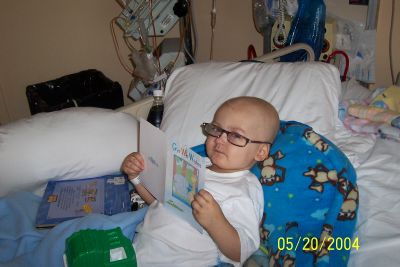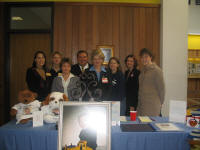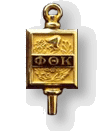|













|
|
Folden Lee IV
Folden was diagnosed with AML (Leukemia) in May 2003. He was 17 months
old. He received several rounds of chemotherapy at UNC Children's
Hospital and went into remission in late summer. He relapsed right
before Christmas 2003. He received a cord blood transplant on April 2,
2004 at Duke University Medical Center....His own cells returned...Folden
is currently in treatment and a second transplant was given on June 8...
The leukemia cells advanced and Folden died on September 1, 2004...

Folden's web page
has been provided to keep everyone updated...
http://www.caringbridge.org/nc/folden/
There are many children as
young as Folden, some even younger, who have begun the biggest fight of
their life. They, as well as their families, need our help. The
Carolinas Region of Phi Theta Kappa has been collecting donations
towards the purchase of gift cards and restaurant certificates to
present these families with that little extra that may help them get
through the day. If you wish to donate to this cause please contact one
of our members. We will see that the funds go to the families in the
5200 Ward at Duke.
The Me Fine
Foundation, Inc. has been established in memory of Folden IV...Our mission
is to assist families with expenses related to long term
treatment...Please visit our website at
www.mefinefoundation.org ...

Fundraiser at Cancer
Awareness Symposium Fall 2004
| |
Leukemia
Leukemia is cancer of the blood cells, and affects tens of thousands
of children and adults throughout the world each year. There are
several types of leukemia, and they are grouped in two ways: One way
is by how quickly the disease develops and gets worse; the other way
is by the type of blood cell that is affected. Leukemia can arise in
either of the two main types of white blood cells — lymphoid cells or
myeloid cells. When leukemia affects lymphoid cells, it is called
lymphocytic leukemia. When myeloid cells are affected, the disease is
called myeloid or myelogenous leukemia.
To learn more about leukemia treatment
and research at Duke Comprehensive Cancer Center, please contact the
Duke Consultation and Referral Center at 1-888-ASK-DUKE
(275-3853). |
| |
Cord Blood
Bone marrow
contains stem cells (or seed cells) which divide constantly and
produce new blood cells within 4-6 weeks. Stem cells are also
present in umbilical cord blood which can be used instead of bone
marrow in a transplant. Stem cells can replace damaged bone marrow
in patients with malignant diseases which require treatment with
very high doses of chemotherapy and/or radiation therapy. They can
also correct diseases in which the marrow malfunctions (e.g. immune
deficiency, aplastic anemia, red cell aplasia, white cell
disorders). Stem cells produce other types of cells (glial cells
and macrophages) that slowly, over about one year, travel to the
brain, liver, and other organs. These cells can produce enzymes
that are defective in children with some inherited metabolic
diseases (inborn errors of metabolism). If transplantation is
carried out early enough damage can be arrested and prevented.
In the past, stem
cell transplants could only be performed in children who had matched
donors in their families. Over the past few years, cord blood banks
have been established and children can use donor units from these
banks when they don't have a matched donor in their family. Cord
blood does not have to match as closely as bone marrow, so most
(>90%) children will be able to find a donor within 1-2 weeks from
this source. Children undergoing transplantation are prepared with
8-9 days of high dose chemotherapy. They are usually hospitalized
for 2 months and need to live near the transplant center after they
are discharged for approximately two additional months. It is a big
undertaking that carries a 10-20% risk of dying from this procedure.
How Do I Become a Cord Blood Donor?
|
|
|



